
In this review, we are going to take a thorough, in-depth look at the Yamaha P515 Digital Piano. The successor to the hugely popular P255 model, and the flagship of Yamaha’s P-series, this model is marketed to professionals and gig musicians who need a portable piano that doesn’t compromise on features.
The P515 includes a huge number of improvements over its predecessor, and is a fantastic choice for anyone who requires exceptional portability alongside a natural, realistic grand piano experience. Yamaha is a household name, and their P-series pianos have set the bar for portable, high quality digital pianos.
However, the P515 is an expensive piano compared to other models in the P-series range. How does it stack up against them, and is it worth your money if you’re a serious musician looking for a professional instrument? Should you buy a Yamaha P515?
Yamaha P515 Summary
Features
An unrivalled feature set at this price point. Hardly anything is missing here - it’s mind-blowingly good.
Sound
As you would expect from Yamaha - a huge selection of very high quality sounds, including two superb grand piano voices.
Price
On the expensive side in the portable instrument category. However, given the features you get, it's good value.
Pros
Cons
Yamaha P515 Summary after twelve hours of testing:
This is a sizeable investment to make in your music-making. However, you won’t go far wrong with choosing the P515, as it has enough features to keep everyone happy.
I will say that if you don’t need the portability, it’s probably not the best model to go for, as if you plan to keep it at home you will need to buy the L515 stand and the LP1 pedal unit, at which point you might as well buy a Clavinova which will look better and likely have more features suited to you (and for around the same price.)
However, if you value portability even slightly, the Yamaha P515 is the one to go for. There aren’t really any compromises I can think of by choosing this over a Clavinova.
Our Rating: 4.75/5
Check the availability and the current price of the Yamaha P515:
Without further ado, let’s get into the detail of what makes the Yamaha P515 so special.
Full Specification List
For a complete specification list, please visit yamaha.com.
Design
No real surprises on the design front here - Yamaha haven’t really done anything radically different to the P255 in respect to the design of the piano. All the buttons are where you’d expect, and Yamaha have really prioritised function and ease of use over form.
That’s not to say the P515 looks bad - I think it looks excellent. Design of the keyboard aside, it will sit quite happily on almost any universal keyboard stand, although if you get a cheap one you might find it a little unstable as the P515 is much heavier than most other keyboards.
The P515 looks much better on the bespoke L515 keyboard stand with LP1 pedal unit - it gives the impression of the complete package and looks very impressive. However, it will be just as functional on a table, an X-frame stand or a desk. The design is contemporary and functional.
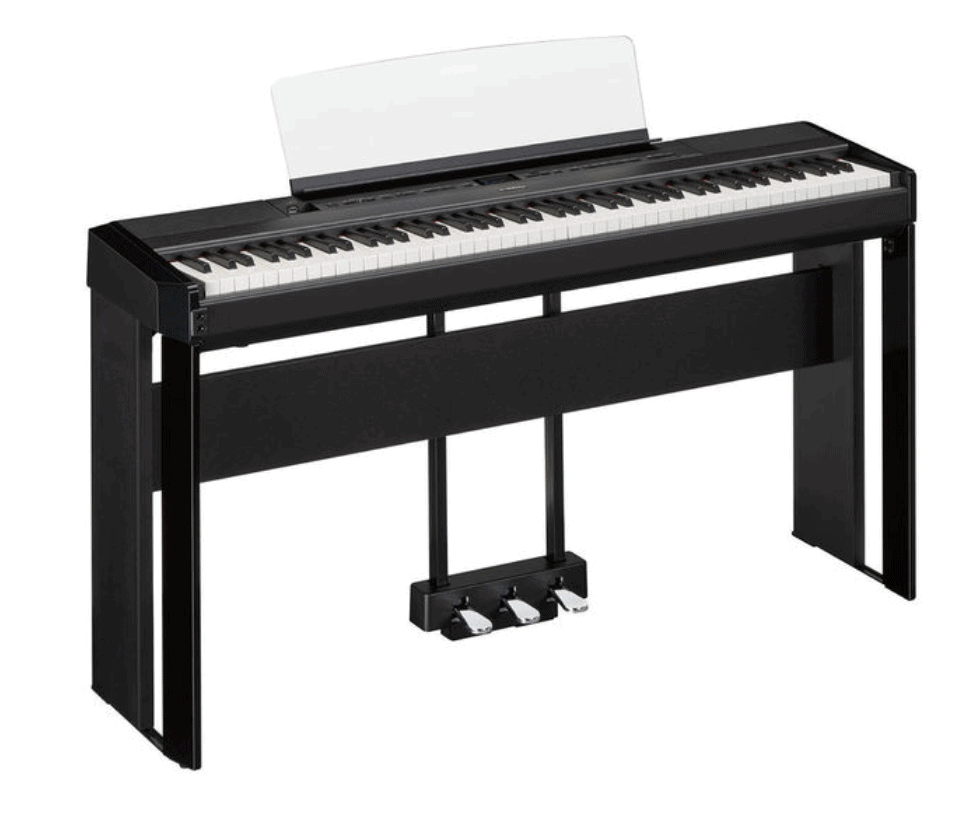
Weight
This one is a bit heavy. Weighing in at 22kgs (48lbs) you will not want to be taking this on the train or the bus with you. However, it is light enough to transport from gig to gig without too many problems, and it isn’t so heavy and bulky that you need two people to lift it.
Yamaha have done well to pack such an extensive feature set into something that’s this size and weight. It’s certainly a very portable keyboard, capable for carrying from concert to rehearsal to gig and more.

Assembly
No assembly is really necessary - simply unpack the P515 from the large cardboard box it comes in, place it on your keyboard stand or table, plug in the power, the included sustain footswitch and away you go. Couldn’t be easier!
However, if you opt for the bespoke L515 stand, that will need assembling, but clear instructions are provided in the box for this. It’s no more difficult than assembling any other Yamaha console digital piano.
When you’ve bolted the stand together and installed the pedals, all that remains is to rest the keyboard on top of the stand and plug everything in.
Controls and Buttons
One of the clear benefits to opting for this model over something cheaper is that the controls on the P515 are so easy to use. You get a very clear LCD screen, which will essentially allow you to control anything on this piano that doesn’t have a self-explanatory dedicated button.
You have a function button to the left, and four arrow keys to the right to control everything necessary. Much, much better than the function + key press combination that plagued Yamahas of old that I have complained so much about on this blog.
What’s also great is the Yamaha Smart Pianist app, which allows you to connect your iPad or iPhone to the P515 via Bluetooth, and allows you to control the piano’s sounds through the app. This makes it even easier to control and select the sounds and effects that you want.
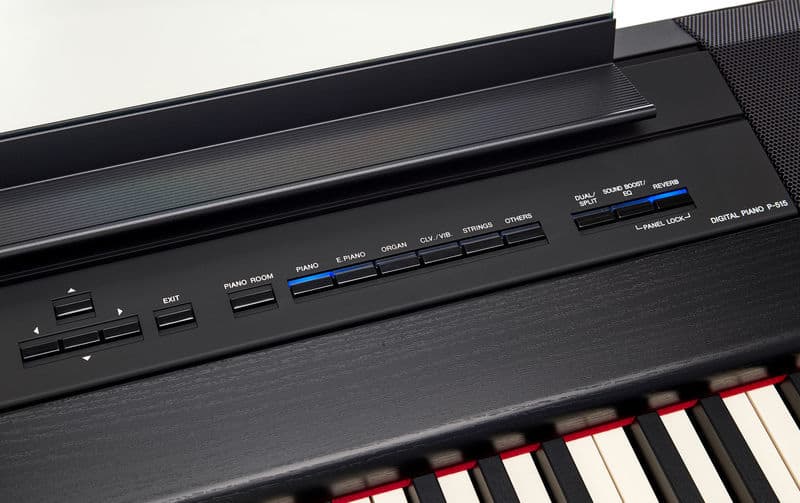
Pedals
You have two options with pedals on the P515 - you can use the included FC4A sustain footswitch (which in my opinion is rather useless) or you can go out and purchase the dedicated LP1 pedal board, which provides three pedals as you’d see on a high-end concert grand piano.
The included footswitch is something Yamaha includes in most of their portable keyboard range, and is simply an on-off switch for the sustain. Probably OK for beginners, but serious musicians are going to want to invest in either the dedicated pedal set, or a better sustain switch.
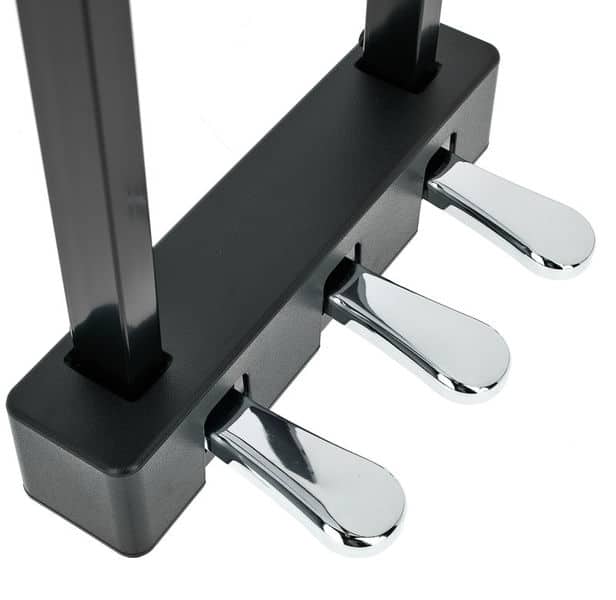
Colours
The P515 doesn’t offer a lot of choice here - you’re able to have either white or black. While this may seem a bit limiting, given that this is a model marketed to professional musicians and teachers, it makes sense. I think the black looks rather striking, but the white also looks fantastic too. The price of both colours is the same.


Piano Sound
Let’s move on to one of the most important parts of this review - the piano sound. All these other features are great, but if the piano sound is poor, everything falls apart.
The P515 comes with two phenomenal sounds, each sampled from a different piano - the flagship Yamaha CFX grand, and the incredible Bösendorfer 290 grand piano.
I’ve been lucky enough to play both of these models in concert halls, and I can honestly say that the P515 gets both of these models absolutely spot on. If I close my eyes and listen, it’s almost indistinguishable from the real thing in terms of the richness, clarity and full-bodiedness of the sound.
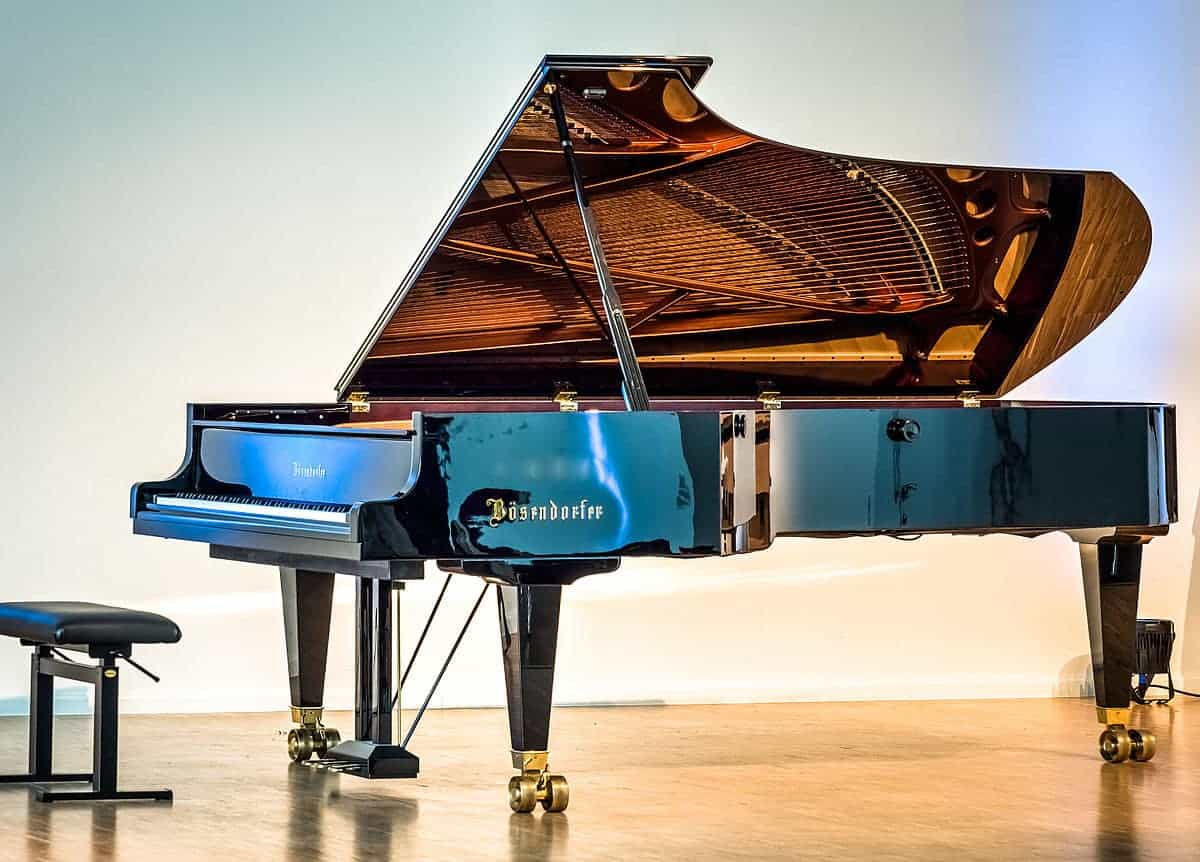
The Bösendorfer lends a much richer, mellower sound ideal for romantic and more modern music - it is perfect for Chopin, Debussy and Ravel. The CFX is much more rounded and suits almost any style of music, from pop, jazz, classical and rock. Whichever one is your preference, I’m sure you’ll agree that the P515 sounds incredible.
Yamaha have also included a third sound - the Yamaha CFX with binaural sampling, which is designed for players wearing headphones, and uses Yamaha’s Stereophonic Optimiser technology to enhance the sound even further while using headphones.
Have a listen to both of these piano sounds - I think you’ll agree that they’re both phenomenal.
Other Included Sounds
Let’s not forget the additional sounds, which are almost as important as the piano sounds.
There are 9 classic Yamaha piano sounds, ranging from a honky-tonk piano to other upright and grand pianos. You’ll likely be familiar with some of these sounds if you’ve played a Yamaha digital piano in the past few years.
What is also included is a harpsichord, electric piano, vibraphone and organ sounds - not to the same quality as the two flagship piano sounds, but they’re pretty close.
Here is a complete list of sounds you get with the Yamaha P515. This covers almost any sound you’ll want to get out of a keyboard. And also, you get Yamaha’s bank of 18 Drum and SFX sounds, as well as a whopping 480 XG sounds, which cover almost any instrument you can think of and then some.
The Yamaha P515 also features something called Virtual Resonance Modelling (VRM) which accurately and organically replicates the subtle sounds you get from an acoustic piano, such as damper resonance, overtones, string resonance and body resonance.
You also get key-off samples, which changes the sound based on how quickly your fingers leave the keys. All in all, this makes for a compelling, organic and realistic piano experience.
The P515 also features a huge 256 note polyphony, which is more than you'll ever need. If you're interested in learning some more about polyphony and why it's important, check out our dedicated article on polyphony on digital pianos.
Speakers
Yamaha has included two speaker sets on each side of the P515. Each speaker set consists of a 15W driver and a 5W tweeter, which ensures clarity of sound. The built in speakers on the P515 are of exceptionally high quality, and I did not notice any distortion or crackling at higher volumes.
However, despite the fact that there is excellent quality of sound across all ranges of sound, including extremes in bass and treble, I felt that these speakers were, while fine for home practice, a little weak to be used in a concert environment. It feels as though they need a little more oomph if they were to be used in a large space.
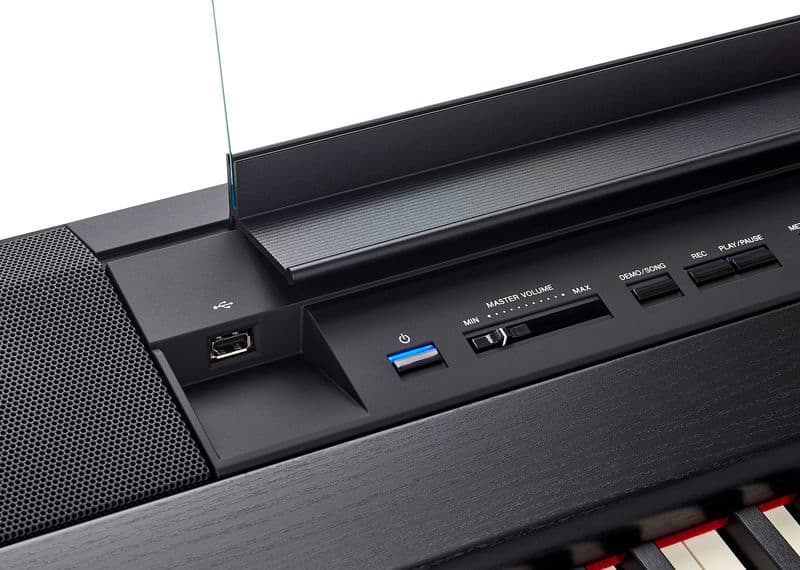
However, I recognise that this would probably make the piano much heavier than it already is, and is probably not necessary given that most concert and gig spaces will have amplification.
Effects and Reverb
The P515 features numerous different types of reverb and chorus effects. These allow you to change the character of the sound to make it as though you were playing in a recital hall, cathedral or studio, etc. What’s really special about the P515, though is the Piano Room and Sound Boost functions.
Sound Boost essentially allows you to edit the graphic equaliser (EQ), and lets you customise and edit the character of the sound to suit the room or environment that you’re in. For example, if you’re in a big room and you need a brighter sound, the Sound Boost will allow you to do that.
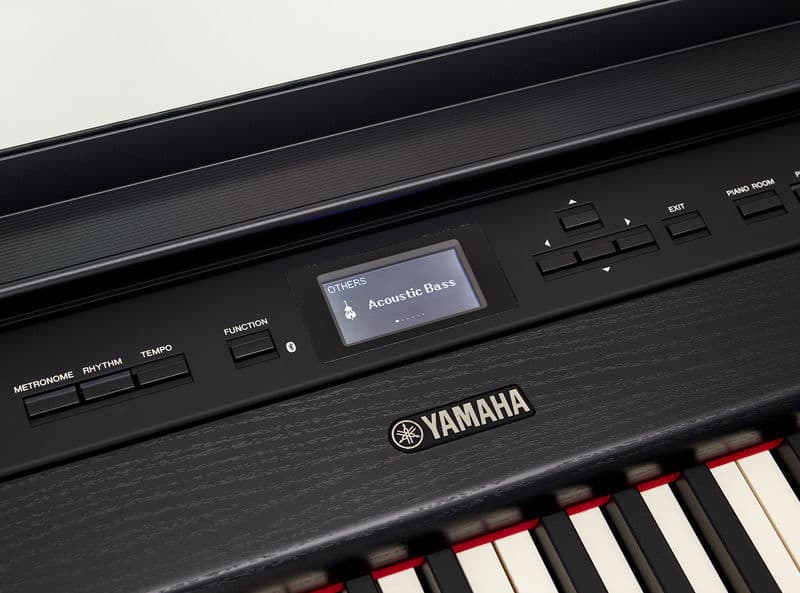
Piano Room has been one of my favourite functions on the Yamaha P515 while trying it out. This allows you to adjust various effects of the piano sounds, including hammer noise, half-pedal point, damper resonance, tone and even whether the lid of the piano is up or down.
With Piano Room, you have ultimate control over the sound of your piano, which you can customise and suit to your personal preferences or the needs of the music you play.
Connectivity
The connectivity of the P515 leaves no stone unturned, and you have all the connections and plugs you could ever hope for. You have the following:
- Aux In (for playing external sound through the in-built speakers)
- Aux Out (for amplification)
- USB-to Host and USB-to-Device (for connecting to a USB device or PC)
- 16V DC In
- 2x standard stereo headphone jacks
- MIDI In and Out
- Aux Sustain (for the included footswitch)
- Aux Pedal (for the LP1 pedal unit)
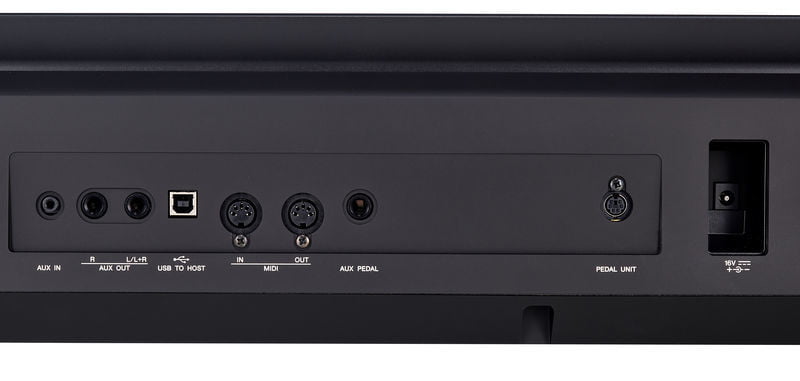
Keyboard
Now we come to the make or break part of the Yamaha P515. If everything else is great, but the keyboard is lacking, then what?
Fortunately, the P515 doesn’t let us down in this regard either. The P515 has one of the best actions I’ve ever played on a digital piano - it’s unbelievably accurate and natural, simulating a proper acoustic piano like never before.
The Action
The P515 uses Yamaha’s coveted NWX (standing for Natural Wood, Escapement) action, which uses real wood parts to replicate the feel of a real grand piano as realistically as possible. The NWX also uses dummy hammers inside the keyboard, which further enhance the realism and response, and make it almost indistinguishable from a real acoustic piano.
Yamaha has previously only included this action on their Clavinova and CP4 Stage Piano models, and I have to say, it’s definitely leagues above some of the actions on their cheaper pianos, for example the GHS and GH plastic actions featured on the P125 and P45, which can be a little sluggish and unresponsive at times.
The action is solid, with plenty of weight (but not too much that it becomes tiring to play after a while.) The action works in combination with the excellent keys and phenomenal soundset to produce a very compelling, organic piano playing experience. Top marks from me!
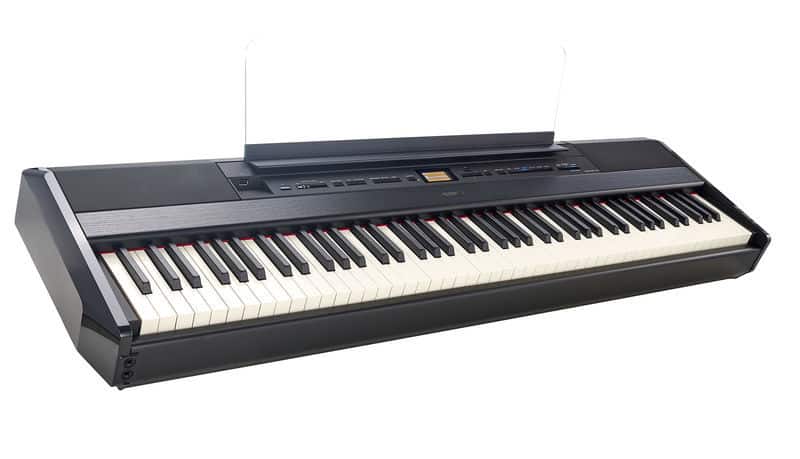
Touch Sensitivity
Yamaha has included six levels of touch sensitivity with this piano. You can even turn it off if you so wish, but in all honesty the default touch sensitivity provides such an excellent experience that I was loathe to start playing around with this setting.
However, if you have children learning the piano, or if your piano finger strength is not quite developed fully yet, you may appreciate making the touch sensitivity a little softer to make it easier to play the P515. Alternatively if you find you’re not getting enough expression out of the default setting, you can change the touch sensitivity so that it’s harder, giving you more expression and dynamic range.
Keys
The 88 weighted keys are super-high quality, being made of wood and plastic. The black keys are textured too. All this leads to an exceptionally authentic experience, with synthetic ebony and ivory on the keytops.
The keys on the Yamaha P515 are the same keys as those fitted to the flagship line of Clavinova pianos. In fact, they are almost the best keys that Yamaha makes - second only to the Avantgrand models, which are very much not portable instruments and are designed to mimic a real piano in every way.
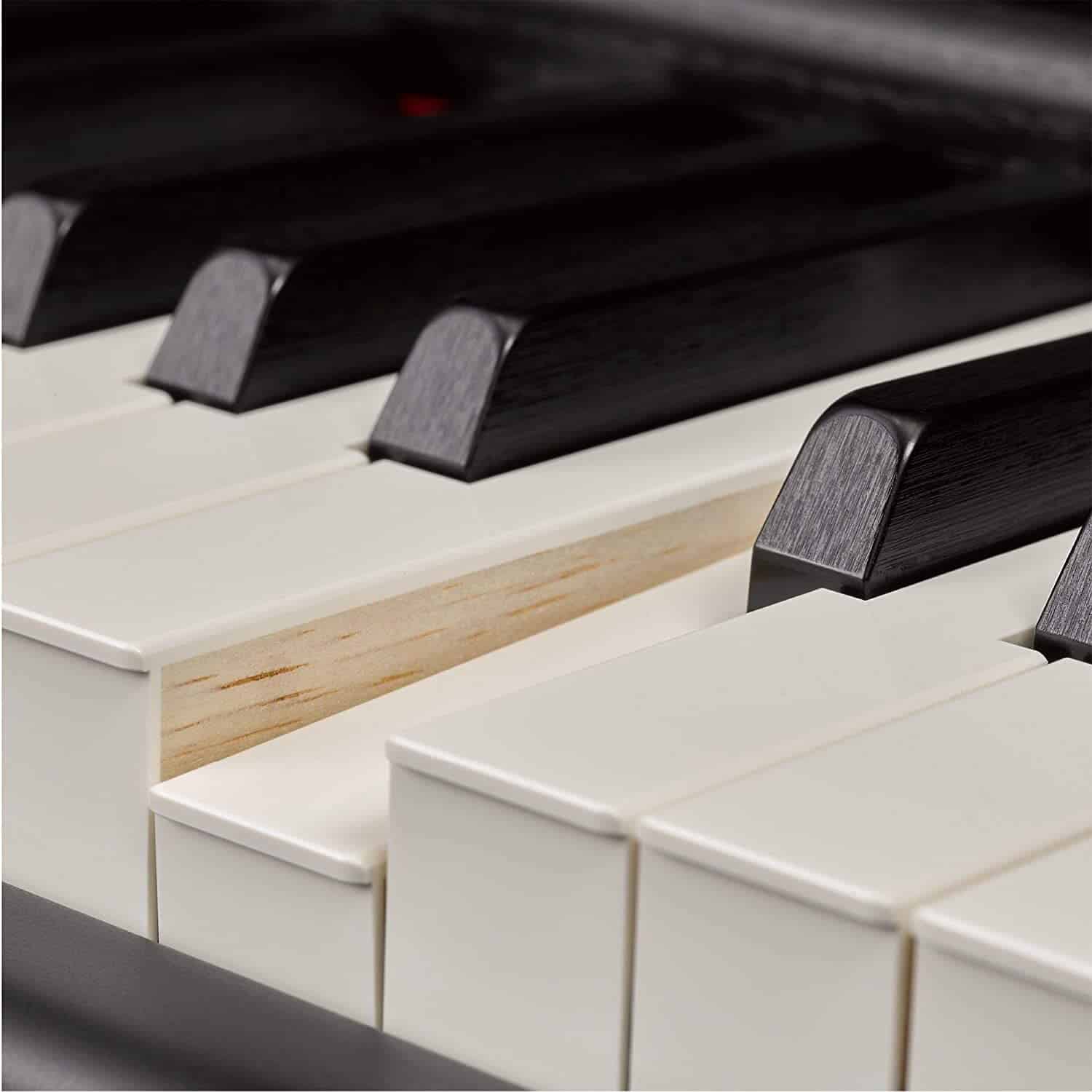
However, the keys on the P515 are fantastic, and if you close your eyes you’ll be very hard pressed to tell the difference between the keys on this model and the keys on a real Yamaha piano.
Included Features and Accessories
Yamaha include the standard set of accessories in the box with the P515, including the following:
However, for a more complete playing experience, you’ll want to invest a little more into your music-making and consider getting the following as well:
Recommended Accessories and Guides

Yamaha L515 Keyboard Stand

Yamaha LP1 Three Pedal Set
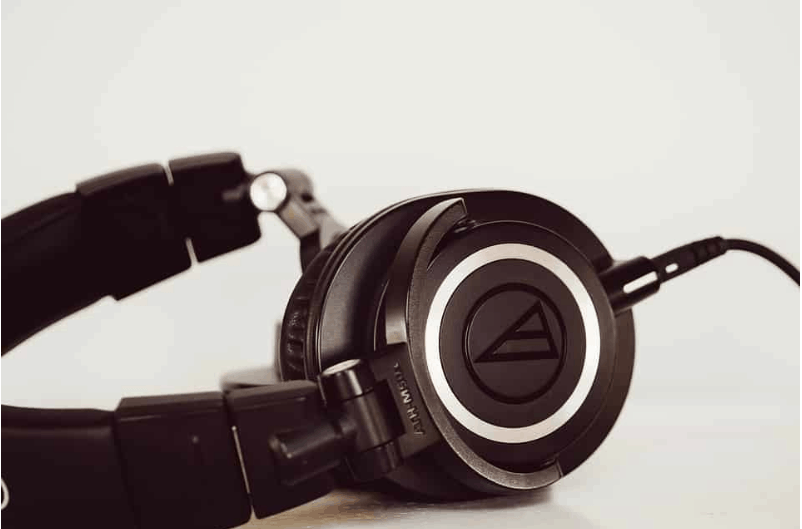
The Best Headphones for a Digital Piano
Final Verdict

Our Rating: 4.75/5
Check the availability and the current price of the Yamaha P515:

What do you think of the DGX_670 ?
My question is about dust possibly accumulating inside my Yamaha digital piano. I use part of the original box as a dust cover. I cut off most of the cardboard and left the full length box as the top and the cardboard sides are around 4 inches. This makes a cover with top and sides but no bottom. It easily slips on and off with plenty of clearance. Is this enough to protect my instrument from dust? And, should I consider using a vacuum to pull out any dust inside? There could be a possibility of fast moving air from the vacuum cleaner generating static electricity on the circuit boards. I would appreciate any helpful suggestions. Thanks, Jerry
Jerry — you also have the option of buying a proper dust cover – such as Kaces or On-Stage dust cover.
My second comment here is – at this moment in time – the white coloured digital piano appears to be a P-125, not a P-515.